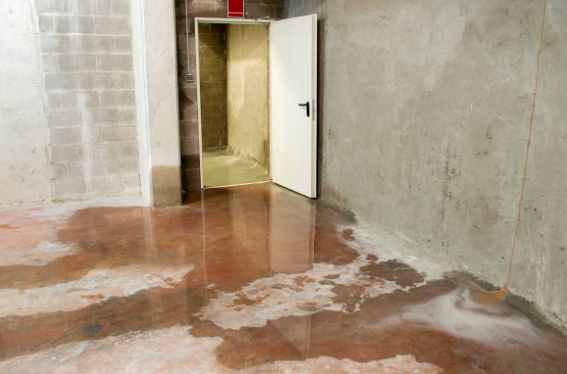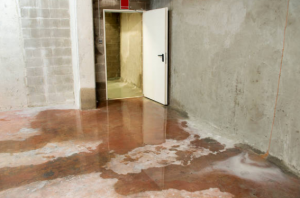Finishing a basement is a rewarding endeavor that can significantly enhance the functionality and value of your home. Whether you’re envisioning a cozy family room, a home office, a gym, or a combination of these spaces, proper planning and consideration of key factors are crucial to ensure a successful project. However, when preparing the basement, people often forget a few minor things that later lead to water damage or flooding. By considering the often-overlooked strategies and incorporating them into your basement finishing plan, you can significantly reduce the risk of water-related disasters. Remember, your finished basement should not only be a source of joy but also a safe and secure living space for years to come.
In this blog, we’ll explore the essential things to consider before finishing your basement to mitigate the risks of basement flooding and basement water damage.
Essential Tips: 10 Things to Remember Before Finishing Your Basement
- Moisture and Waterproofing: Before you start any renovations, it’s important to assess the existing moisture situation in your basement. Check for signs of water damage, leaks, dampness, or mold. If you notice any of these issues, they must be addressed and resolved before proceeding with the renovation. Investing in properly waterproofing basement walls and floors is a fundamental step to preventing your basement from flooding and keeping it dry. Neglecting to floodproof or assess moisture issues before finishing a basement can impact your property, health, finances, and entire livability of the space.
- Assessing the Foundation: The next step is to thoroughly check and inspect the structural integrity of your basement. A foundation serves as the base of any building, and any issues with it can have serious consequences later.
How to Check the Foundation Before Finishing the Basement?
The following is a detailed list of what to look for when inspecting the structural integrity of the foundation in the basement:
- Foundation Cracks: Check closely the size, location, and type of cracks in the foundation. Hairline cracks can be considered normal, but larger or diagonal ones could indicate structural problems. Recovering these cracks can ensure you are protected from any kind of basement water damage.
- Horizontal Cracks: If you find horizontal cracks, then it is definitely a red flag indicating a serious structural issue. Seek professional help to evaluate this condition.
- Sinking or Settling: Check for signs for settling or sinking using a leveling tool. If you see a window frame uneven, it could indicate a foundation settlement problem.
- Assess Previous Repairs: If there have been previous repairs to the foundation, make sure that they were done correctly and have held up over time.
- Check Soil Conditions: Understanding the type of soil on which your foundation is built is crucial. Some soil types can exert more pressure on the foundation and may require additional reinforcement.
- Inspect the Exterior: Check the exterior foundation for cracks, bulges, or any signs of soil erosion around the base. Make sure that the ground slopes away from the foundation to prevent water accumulation.
- Pest and Termite Inspection: Conduct a thorough inspection for signs of pests and termites, as these pests can cause damage to the foundation.
Evaluate Deteriorating Material: Inspect for any crumbling or deteriorating material in the foundation, as this could signify structural problems that will need immediate attention.
- Identify Code Compliances: Ensure that you are familiar with and adhere to local building codes and permit requirements. Depending on the scope of your project, you may need permits for electrical work, plumbing, structural changes, and overall basement finishing. Non-compliance can lead to legal issues and delays in your project, so it’s important to do the necessary research and obtain the required permits.
- Budgeting: Setting a realistic budget is a necessary step in any renovation project. Understand the costs involved in finishing a basement, including materials, labor, and any unforeseen expenses. It’s wise to allocate a portion of your budget for emergencies, as unexpected issues may arise during the renovation process
- Install an Interior Drainage System: Consider installing an interior drainage system like a French drain or a sump pump. These systems effectively collect and divert water away from the basement, keeping it dry. A sump pump, in particular, is an excellent investment to prevent basement flooding by pumping out excess water that accumulates during heavy rains.
- Defining the Purpose and Design: Carefully consider the purpose of the basement. Is it an entertainment area? For guest purposes? A laundry area? Or a culmination of all? Your basement’s purpose will influence the design, layout, and features you choose. Create a detailed plan, including the layout, color scheme, flooring, lighting, and furniture arrangement to align with your vision. But when you do that, keep a few things in mind such as:
- Choosing waterproof paints and coatings for walls
- Select water-resistant building materials
- Window well covers and proper sealing
- Utilize permeable materials
- 7. Electrical and Plumbing Considerations: Assess the existing electrical and plumbing systems in your basement. Determine if they need to be updated or expanded to accommodate the finished space. Work with licensed professionals to ensure all electrical and plumbing work meets safety standards and building codes. Also, try elevating the electrical appliances strategically in case any flooding happens due to heavy rain.
- Windows and Ventilation: Integrating windows or other means of natural ventilation is essential for a finished basement. Proper ventilation improves air quality and prevents a stuffy or damp environment. Evaluate your options for window installation and ventilation systems to maintain a healthy and enjoyable space.
- Safety Measures: Safety should be a paramount concern in any living space. Install smoke detectors, carbon monoxide alarms, and proper egress windows for emergency exits. Also, ensure all building materials and furnishings meet fire safety standards.
- Professional Expertise: Consider consulting professionals, such as architects, interior designers, or contractors, to guide you through the basement finishing project. Their expertise can help you navigate challenges, make informed decisions, and ensure the successful execution of your vision.
By following the above steps and thoroughly planning your basement refinishing project, you’ll be well-prepared to execute it efficiently and save yourself from basement flooding and basement water damage. However, if by any means, water still seeps into your basement creating bad odors, mold and ruining the structural integrity of your home, contact ServiceMaster S&R Systems for water damage restoration services in Kane, Kendall and Will County, Illinois. To book our services, call us at 630-896-0030.



